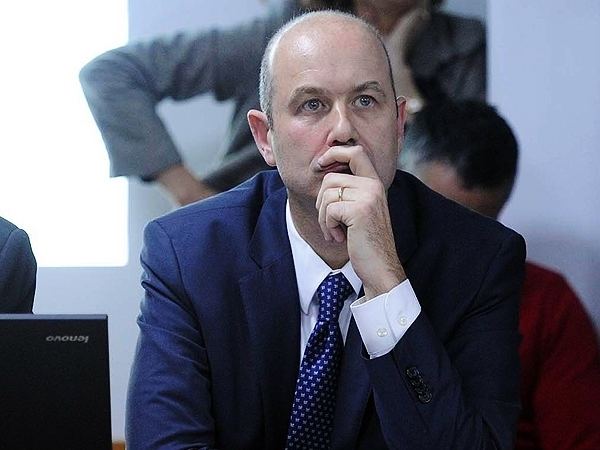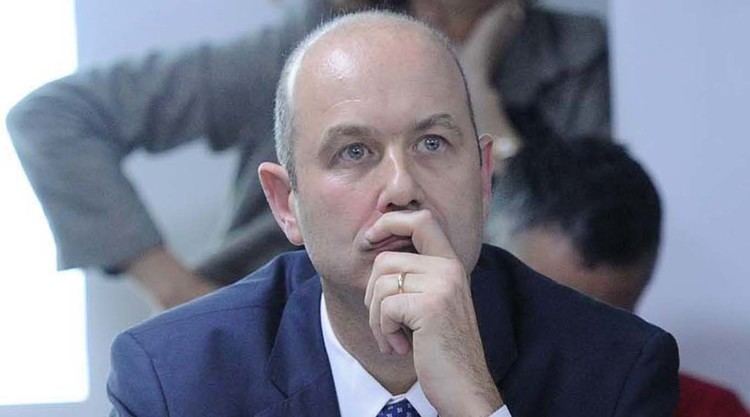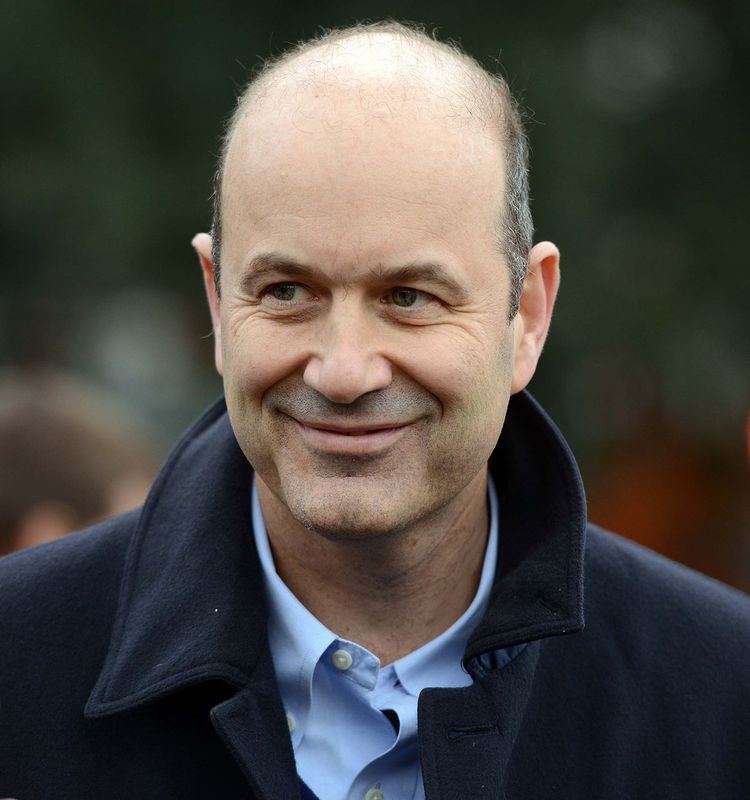Vice President Lucas Llach Name Federico Sturzenegger | Role Economist Nationality Argentine | |
 | ||
Full Name Federico Adolfo Sturzenegger Alma mater National University of La PlataMIT Books Debt Defaults and Lessons from a Decade of Crises, Financial Markets and Inflation Under Imperfect Information Similar People Alfonso Prat‑Gay, Eduardo Levy Yeyati, Jaime Duran Barba, Patricia Bullrich, Domingo Cavallo | ||
Constituency City of Buenos Aires | ||
Federico sturzenegger y su primer encuentro con jaime dur n barba
Federico Sturzenegger (born 11 February 1966 in Rufino) is currently the Chairman of the Central Bank of Argentina. Sturzenegger has a PhD in Economics in MIT and is a professor at Torcuato di Tella University. Previously he was a National Congressman for the conservative party PRO. Academically he co-introduced Dark Matter, a term referring to 'invisible' assets that explain the difference between official estimates of the current account and estimates based on the actual return net financial position. Throughout his academic career he has published close to fifty articles in refereed journals as well as eight books. Sturzenegger was investigated for crimes during his administration as a member of government in 2001, but was then discontinued by the Camara Federal
Contents
- Federico sturzenegger y su primer encuentro con jaime dur n barba
- C5n economia politica entrevista a federico sturzenegger
- Career
- Presidency at Central Bank
- National Congress
- Management of Banco Ciudad
- Dark Matter
- De Facto Exchange Rate Regimes Deeds vs Words
- References

C5n economia politica entrevista a federico sturzenegger
Career

Federico Sturzenegger graduated in 1987 with an Economics degree from the National University of La Plata. He later obtained in 1991 his Ph.D. at Massachusetts Institute of Technology.

Between 1991 and 1994, Sturzenegger was an assistant professor of economics in the University of California, Los Angeles. He returned to Argentina in 1995 when José Estenssoro appointed him as Chief Economist of YPF.
In 1998, Sturzenegger left his position in YPF and became Dean in the Business School at Torcuato di Tella University until the year 2001. In 2001, he interrupted his academic profession and decided to participate in the public sector as Secretary of Political Economy in Argentina in the midst of an incoming economic crisis. In 2002, he returned to his previous occupation as Dean at Torcuato di Tella University until the year 2005.
Between 2005 and 2007, Sturzenegger was a visiting professor of public policy at the John F. Kennedy School of Government, Harvard University. During the year 2005, he was selected as Young Global Leader in the World Economic Forum in Davos and in 2006 he was awarded the Konex Prize. In 2008. when Mauricio Macri, the mayor of the city of Buenos Aires, asked him to act as president of the Bank of the City of Buenos Aires he returned to Argentina. During his tenure, the bank made a big turnaround from losing 160 million Argentine pesos annualized during the six months previous to his appointment to becoming the most profitable state-owned firm in the country six years later with record profits of more than 1300 million Argentine pesos in 2013. His management of the bank became a Harvard case study.
In 2013, Federico Sturzenegger resigned as President of Banco Ciudad to become a Member of the Chamber of Deputies.
He became the president of the Central Bank after Alejandro Vanoli left because of Mauricio Macri's rise to power the 10th of December 2015.
Presidency at Central Bank
The 11th of December Federico Sturzenegger assumes the role of President of the Central Bank. On the 16th of the same month the Bank ended the currency exchange blockade (cepo), in force for more than 4 years.
The directory of the Central Bank at the beginning of Sturzenegger’s administration was composed by Lucas Llach, as vicepresident; Horacio Tomás Liendo (n); Demián Reidel; Pablo Curat; Fabián Zampone; Francisco Gismondi; Pedro Biscay, designated by the ex president Alejandro Vanoli; Germán Feldman and Juan Cuatromo, by the ex minister of Economy of that time Axel Kicillof.
National Congress
As a Congressman, Federico Sturzenegger presented 11 bills and numerous and decisive participations in the Chamber of Deputies. In the year 2014 he was 13º in a ranking of participation in sessions.
In a session in which a bill that generated "open access" to the railroad tracks for freight transport was treated, and where is involved the then minister of transport Florencio Randazzo was involved, the Congressman managed to include the transport for passengers in this project. The law in question suggests that the State make available rail infrastructure, so it can be used by any company created to operate rail freight, or by individual companies that choose to do what today do the successful tenderers, keep a small operation itself for their transportation needs.
One of the bills presented by Federico Sturzenegger was one that strived for the universal and compulsory education since age 3. Soon after, the government presented a similar project which consisted of the obligation at 4 years of age. Sturzenegger argued that in many parts of the world it was shown that children who receive quality early education at the age of 3–4 years, had lower dropout rates, higher educational level completed, higher wages, better academic performance later, and a lower proportion of them was in the need to receive state social assistance plans.
As the former president of the Banco Ciudad he had a pending issue. After the so-called Conti Law, that took the judicial deposits from Banco Ciudad and transferred them to Banco Nación, he presented a project with the idea of allowing free competition between financial entities in order to attract this deposits, which would result in a higher level of service and better rates for the judicial deposits.
In December 2014 Sturzenegger presented a bill that consists of implementing a loan scheme with the possibility of granting mortgage loans for housing capital in line with the general level of inflation (plus a bonus). Thus, credit is preserved in real terms. The proposal was based on the Chilean model of indexed currency, using the Unidad de Fomento. According to the same project, implement it significantly reduces the interest on mortgage loans, approximating its value to a rental. As the value of capital is preserved, loans of 30 years or more would automatically would develop.
Management of Banco Ciudad
In February 2008 Sturzenegger was appointed President of the Banco Ciudad, a state owned bank property of the Government of the City of Buenos Aires. Before Sturzenegger`s appointment the bank was losing money. In the second half of 2007 it had suffered losses over 80 million Argentine pesos. In 2013, after six years under Sturzenegger's management, the bank reached a record profit of more than 1300 million Argentine pesos, becoming the most profitable state owned company in Argentina. Between the years 2008 and 2012 the bank tripled its net worth and multiplied by 7 its loans to medium and small enterprises, by 6 its loans to large enterprises, and by 4 its mortgage loans.
During Sturzenegger's management the bank became the only one in Argentina to offer a free savings account for all its clients, the only bank that had opened branches in shanty towns, and the only bank to offer loans (including mortgage loans) to people who earned the minimum wage. The bank also became known for pushing new alternatives for transportation, such as those that allowed the client to buy bicycles or for a taxi driver to buy his or her own cab.
Sturzenegger's management is known for implementing a unique hiring system based in meritocratic results and inspired in the Brazilian Development Bank. The primary objective of this new system was to promote equal opportunities through a recruiting based on academic results. A first selection was made on academic grades. The preselected group of applicants had then to conduct another exam at the Universidad de Buenos Aires. Those who had studied in public schools were prioritized for the selection.
By the year 2013 the bank was going to move its central headquarter to a new building designed by Norman Foster. The new headquarter was designed with construction standards that would make it the most sustainable public building in Latin America.
Harvard Business School wrote a case study describing the renovation of Banco Ciudad and classifying Sturzeneggers management as one of the two most successful experiences of public company's transformation.
Dark Matter
Dark matter is a term coined by Sturzenegger and Ricardo Hausmann to refer to the 'invisible' assets that explain the difference between official estimates of the U.S. current account, and estimates based on the actual return on the U.S. net financial position. Specifically, the U.S. Bureau of Economic Analysis (BEA) estimated the net U.S. current account deficit to be 2.5 trillion in 2004. However, according to Sturzenegger and his colleague Ricardo Hausmann, the U.S. current account deficit cannot in reality be as high as it is estimated to be: otherwise, the U.S. would be paying large amounts of interests on its debt. This does not seem to be the case: net income in 2004 was still a positive 30 billion, which is not lower than it was in 1980, before the U.S. built up its current account deficit. Thus, the authors argue that the "real" cumulative current account between 1980 and 2004 had in fact been positive, and that somehow a large amount of (foreign) assets are being left out of the calculations.
The suggested source of this "missing wealth" is dark matter, resulting from the unaccounted export of ideas and other services (such as insurance or liquidity) from the U.S. to other economies. The two authors claim that the U.S. has significant exports, mainly of business know-how bundled with its Foreign direct investment) that do not show up in official trade statistics. These exports increase the real value of its foreign assets, and thus lower the real size of the deficit. Therefore, they argue, there is less reason to worry about the U.S. financial position than is usually assumed. In addition, this dark matter in the U.S. current account also has implications for the accounts of other countries, which have been inadvertently accruing liabilities by importing know-how.
The idea of dark matter has not gone without criticism. First, Willem Buiter has argued that dark matter should result in a higher rate of return on U.S. external assets than on U.S. external liabilities. However, he claims, there is no convincing evidence that this is the case. Second, the U.S. income from dark matter seems to vary enormously from year to year, even though it stems from permanent characteristics of the U.S. economy like the export of know-how. Lastly, Mathew Higgins, Thomas Klitgaard, and Cedric Tille agree with the assertion that U.S. foreign assets are currently undervalued. However, they argue that more important, U.S. foreign liabilities are overvalued. Thus, The U.S. has fewer foreign liabilities than is currently assumed; this fact (rather than dark matter) explains the unexpectedly high net income. In a 2007 article, Hausmann and Sturzenegger respond to some of these critiques, defending the existence and function of dark matter.
De Facto Exchange Rate Regimes: Deeds vs Words
In a joint work with Eduardo Levy Yeyati, Federico Sturzenegger developed a popular classification of exchange rate regimes de facto in the paper "Classyfing Exchange Rate Regimes: Deeds vs. Words". Stuzenegger and Levy Yeyati sustained that most of the empirical literature on exchange rate regimes were using the IMF de jure classification based on regime announced by the governments, despite the recognized inconsistencies between reported and actual policies in many cases. Many countries that in theory had a flexible exchange rate intervened in exchange markets so pervasively that in practice very little difference existed (in terms of observable performance) with countries that have explicit fixed exchange rate regimes. Conversely, periodic devaluations of pegs in inflation-prone countries were the result of the implementations of monetary policies that were inconsistent with fixed exchange rates and that made the effective regime resemble a flexible arrangement. Moreover, countries that appeared to behave according to the declared regime during tranquil times could be tempted to change their course of action once the regime was under stress. Thus, a very different picture of exchange rate regime choices might have appeared once the international context became more volatile.
The authors proposed a new de facto classification of exchange rate regimes that reflected the actual rather than the announced policies, providing an alternative as well as a complement to the standard de jure approach. Sturzenegger and Levy Yeyati managed to define the exchange rate regimes according to the behavior of three classification variables: changes in the nominal exchange rate, the volatility of these changes, and the volatility of international reserves. Underlying the selection of these variables they made a textbook definition of exchange rate regimes, where fixed exchange rate regimes were associated with changes in international reserves aimed at reducing the volatility in the nominal exchange rate, and flexible exchange rates were characterized by substantial volatility in nominal rates with relatively stable reserves. Thus, the combined behavior of these three classifications was sufficient to determine the regime to which each country belonged at any point in time.
